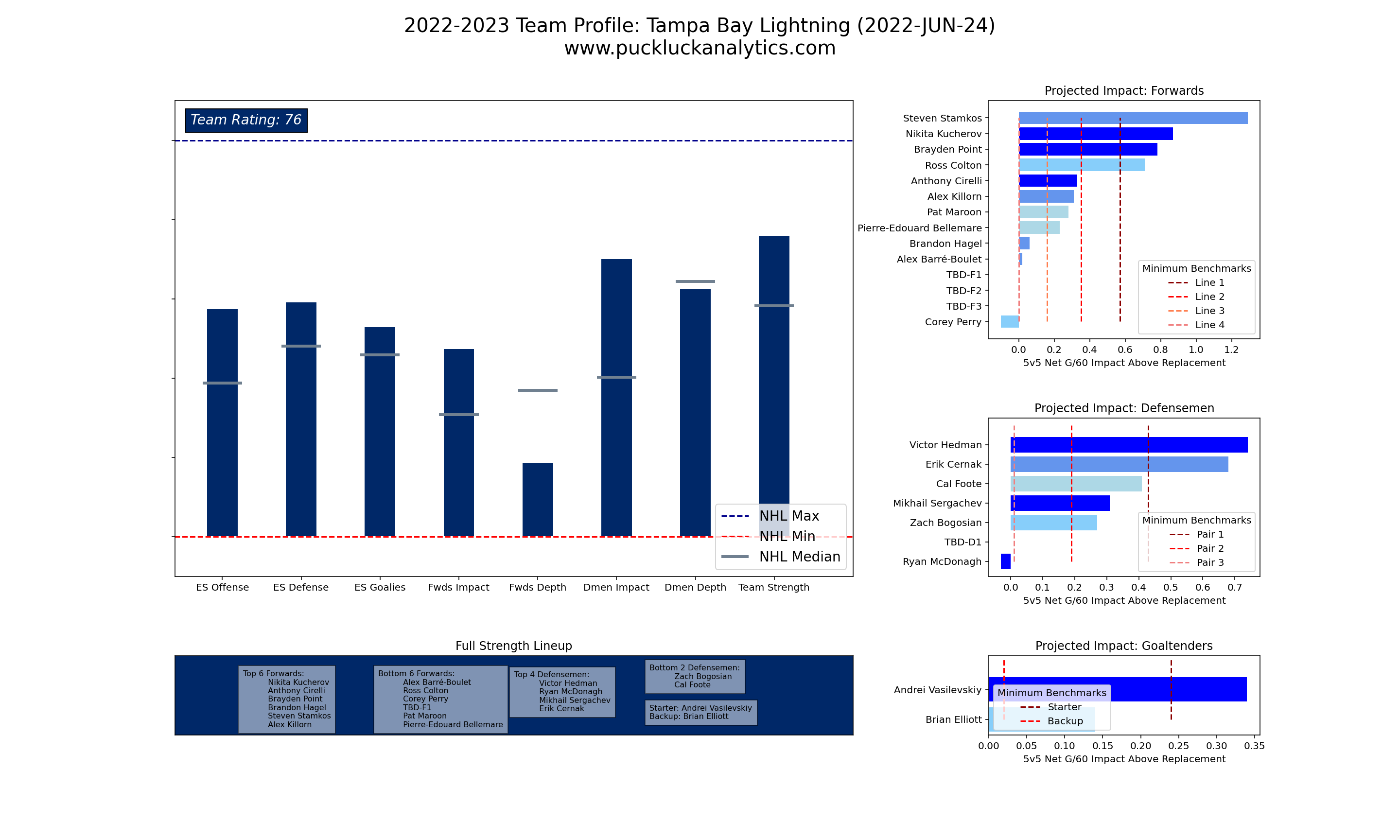The Atlantic Division looked like a distinct caste system in 2021-2022 with the top 4 teams among the best in the entire NHL while the bottom 4 teams were more than a few steps behind. Will the status quo prevail in 2022-2023 or are there teams that may cross the large chasm in the standings? Which teams are in the best position to improve their rosters over the summer as the offseason gets underway?
For the analysis below, we’ll make a few key assumptions. First, we’ll assume that all RFAs will return to their current clubs. Their impact is included in the team projections, however no cap hit is included in the team totals. Obviously, some of each team’s cap space will be required to resign their RFAs so we’ll make note of potential cap headaches where applicable. Second, all UFAs are removed from the rosters. Any resulting holes in the roster have been filled with replacement level players.
Atlantic Division Projected Standings
With rosters adjusted as described above, the four incumbent playoff teams maintain their edge in the early projections for the 22/23 campaign. The Boston Bruins are the early favorite, although the Panthers, Maple Leafs, and Lightning all look strong as well. The Ottawa Senators lead the group of 21/22 non-playoff teams looking to close the gap in the standings.
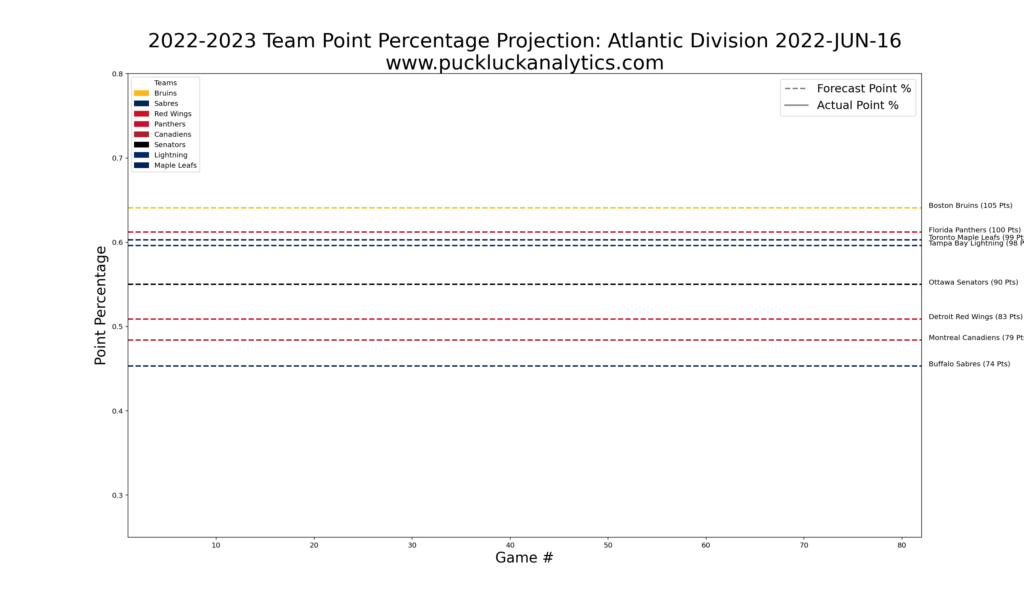
Obviously, the are plenty of decisions to be made by each team over the summer and offseason moves will change this outlook. Each team has a unique set of roster construction and cap space considerations as the offseason gets underway. How might the landscape change over the offseason? Let’s take a look at each team’s situation, in order of the current projected standings, to see which teams have the most potential to improve over the offseason.
Boston Bruins
Even with perennial Selke nominee Patrice Bergeron removed from the roster as a UFA, the Bruins lead the early Atlantic Division projections with strong team defense and goaltending. Jeremy Swayman’s body of work is still very small at the NHL level, but his projection is very strong based on strong what he’s done so far. The defense is strong, led by Charlie McAvoy, and has good depth. The one glaring weakness is at forward, where the Bruins depth falls off quickly after the top line.
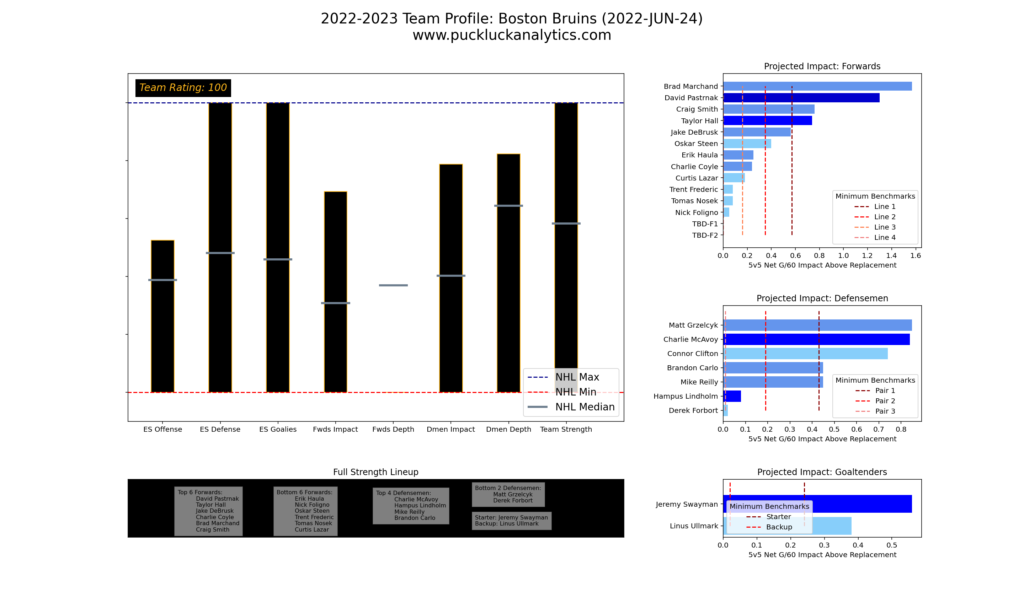
The Bruins enter the offseason with 21 players under contract so they will only be looking to add a couple of players to fill out the roster. The difficulty is that they have over $80M committed against the cap already, so two additional skaters would have to come on near league minimum contracts. If Patrice Bergeron decides to return next season, the Bruins would add another high impact forward to the mix but would likely have to move out some salary to make the cap work.
With a roster that’s nearly full of NHL players and little cap space available, the Bruins aren’t likely to look much different by opening night. The caveat is the number of significant injuries Boston faces heading into next season. With Brad Marchand, Charlie McAvoy and Matt Grzelcyk all expect to start the season on the injury list, the Bruins may have some LTIR cap relief available.
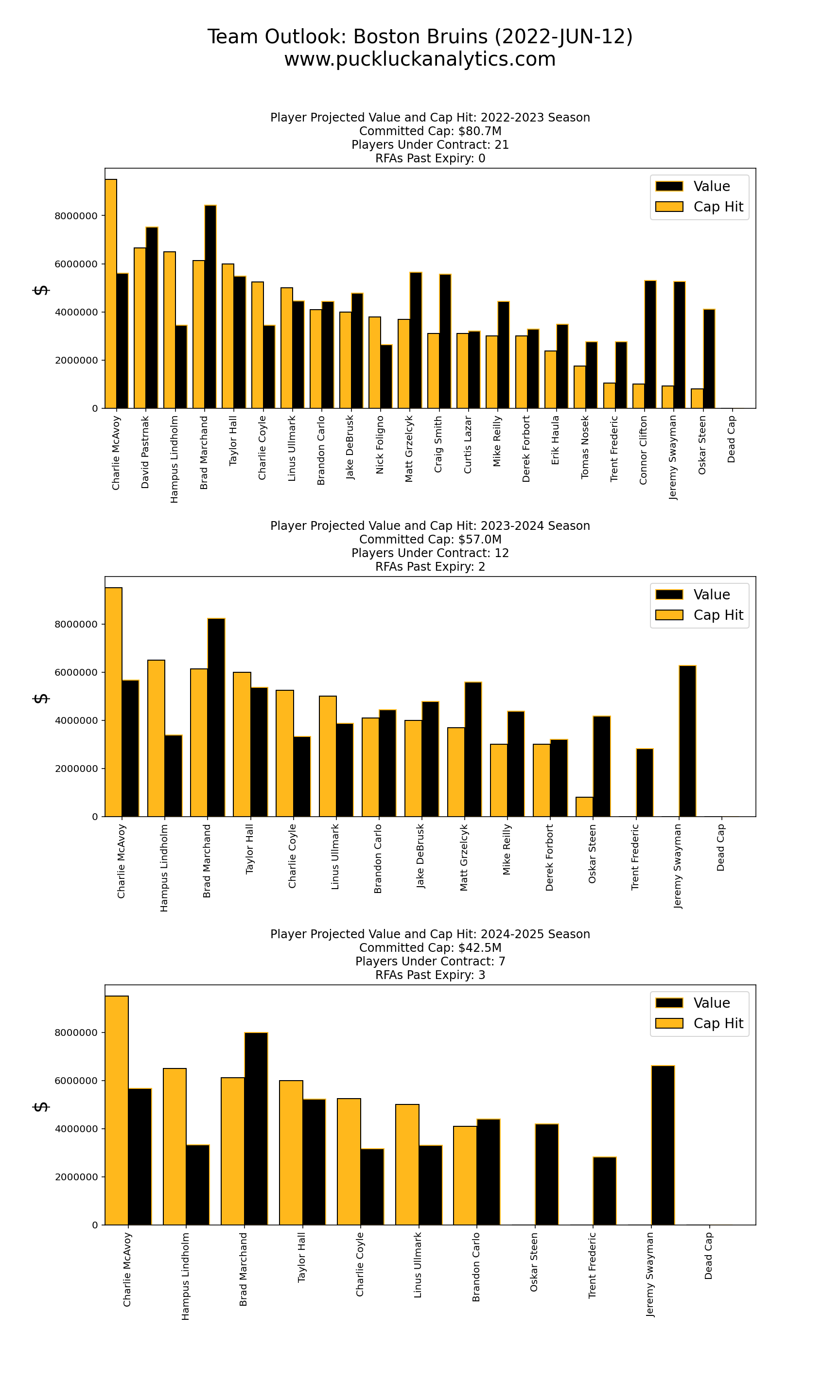
Florida Panthers
The reigning President’s Trophy winning Florida Panthers sit second in the current projections for the Atlantic. They’re the polar opposite of the Bruins, with a top rated offense driving the team’s success. Defense and goaltending are areas where they can look to improve.
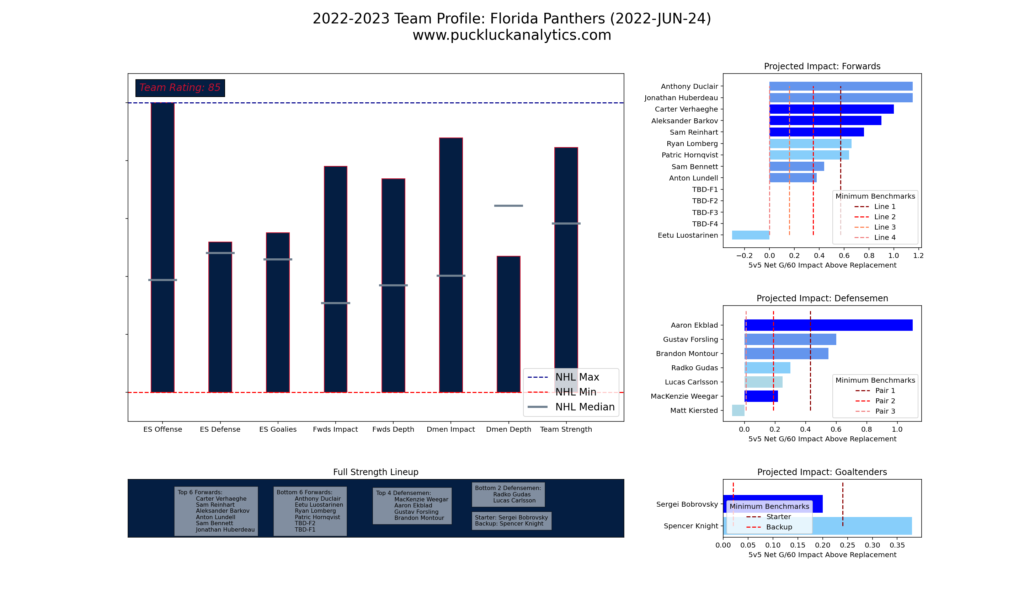
The Panthers have more roster flexibility than the Bruins, with only 16 players included on the current roster. However, they only have about $4.6M of cap space available to fill those spots as the cost of Keith Yandle’s buyout comes home to roost this season with a dead cap hit over $5M. With an average of less than $700k available to fill 7 roster spots, the Panthers will have to move out some salary. It’s already been rumored that they are shopping Sergei Bobrovsky, although his contract will be a tough one to move.
The Panthers are in a tough spot with the cap this season and it will take some carful maneuvering to keep the team at it’s current level going into the 22/23 season.
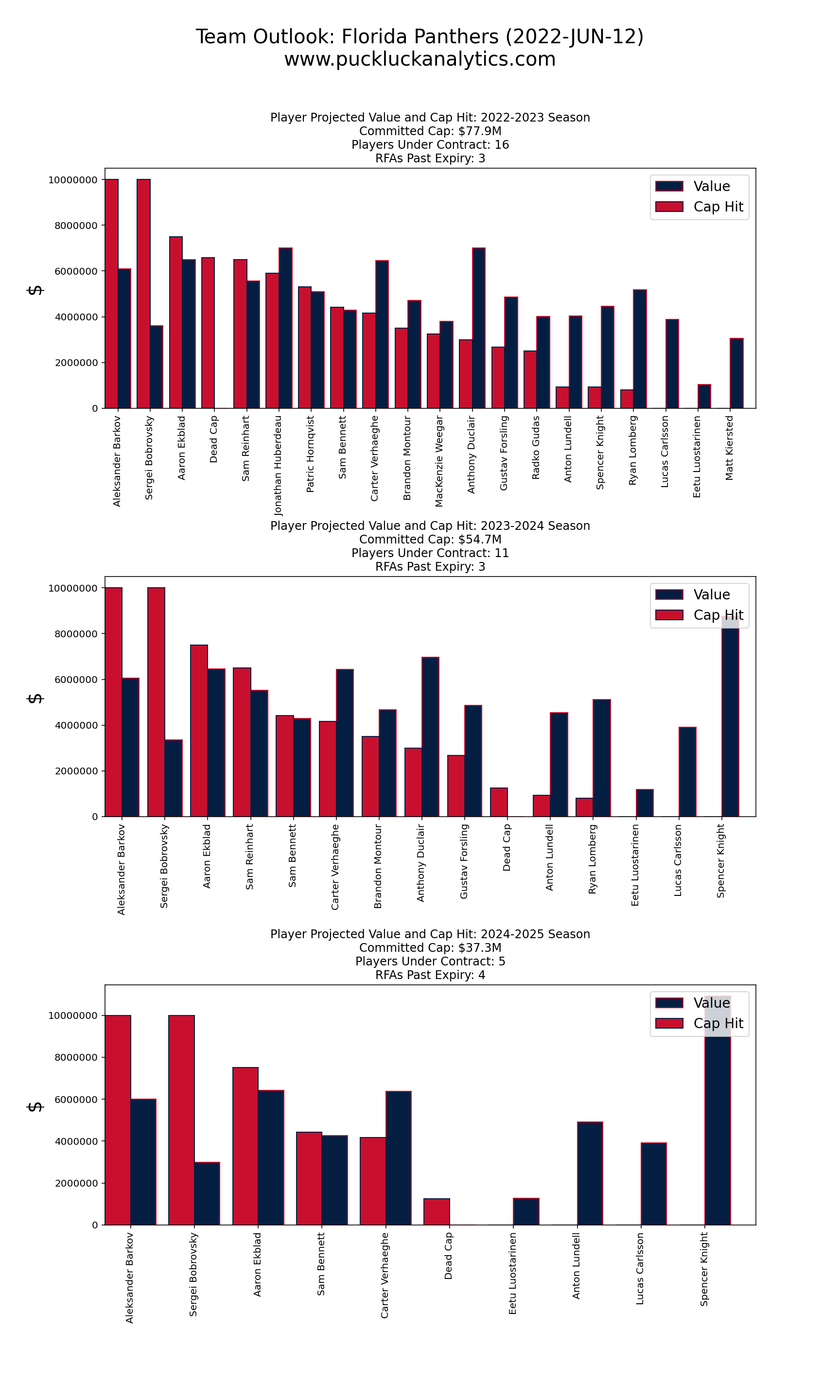
Toronto Maple Leafs
The Maple Leafs have the most balanced roster between offense and defense that we’ve seen so far. Goaltending appears to be a weakness, although the lack a second goaltender on the roster is the main culprit. How they fill that hole will be a big part of how successful their offseason is.
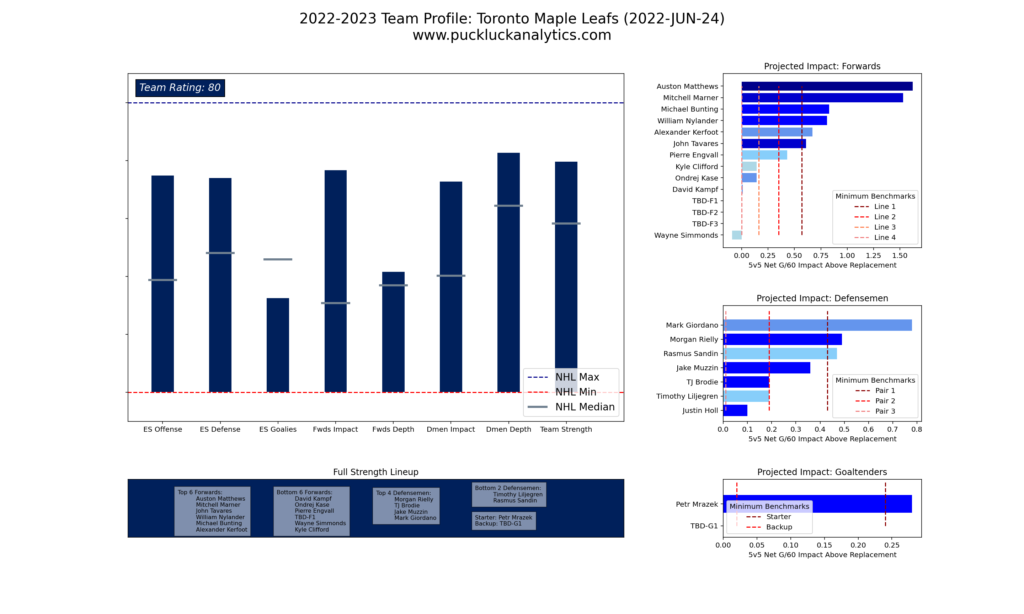
The Maple Leafs have some roster flexibility with a few holes up front and in goal created by UFAs. They also have the most cap space of the teams we’ve looked at so far, with about $10M available. They have about $1.2M of available cap space per open roster position, which is enough to find high value depth players. Some of that cap space will have to go to re-signing their 4 RFAs, however, who seem likely to command more than that.
Finding a quality goaltender on an affordable contract will have the biggest impact on the Leafs 22/23 season projection. They have the more flexibility than the Bruins and Panthers and have an opportunity to move up the projected standings with a good offseason.
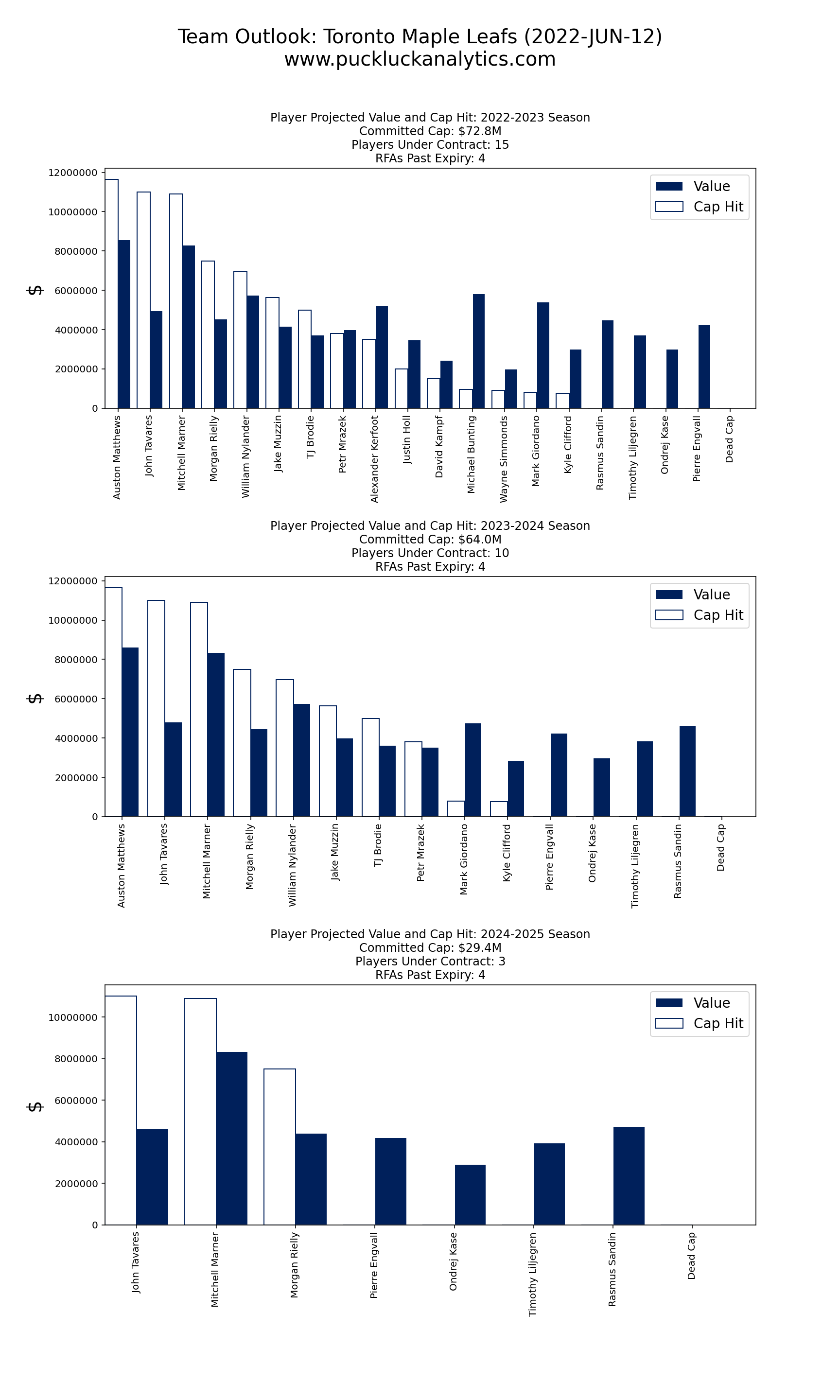
Tampa Bay Lightning
The Tampa Bay Lightning have another interesting offseason ahead after a third straight trip to the Stanley Cup Final. They continue to look like an above average team, with forward depth being their biggest weakness. With some open roster spots due to UFAs, they’ll have a chance to improve that over the summer.
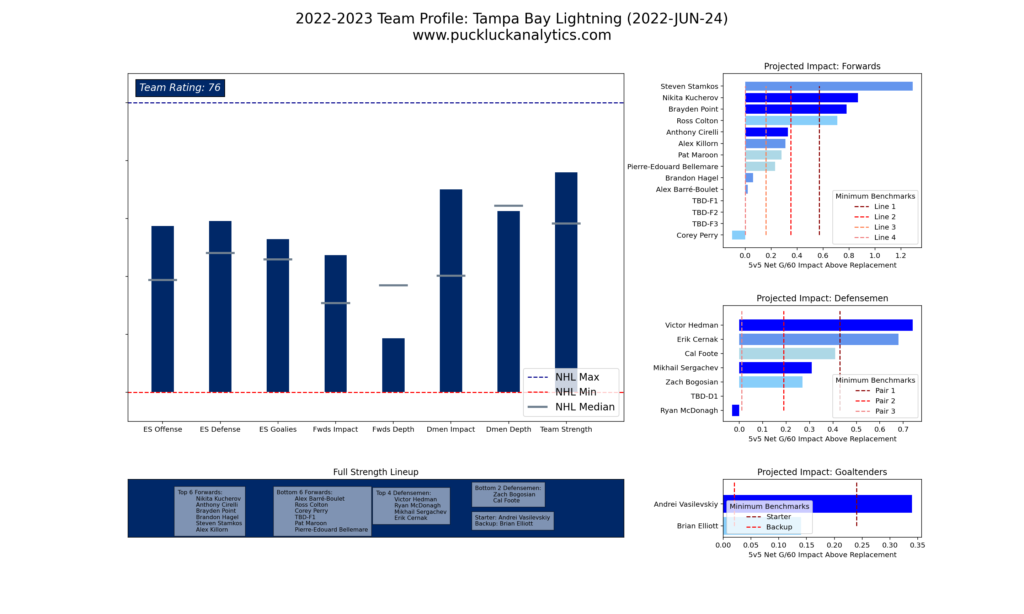
The Lightning head into the offseason with nearly a full roster for 22/23 and are only about $5M below the salary cap. Ondrej Palat looks likely to be a cap casualty as he is a UFA this offseason, along with deadline acquisition Nick Paul. Most of the team remains under contract for next season, though, so the Lightning will be able to run it back with little turnover if they choose to.
With little cap flexibility this offseason, the Lightning will have a difficult time making significant improvements to the roster this offseason. That said, the roster is likely to see little turnover and the Lightning team that has dominated the postseason for three straight seasons could be back mostly intact.
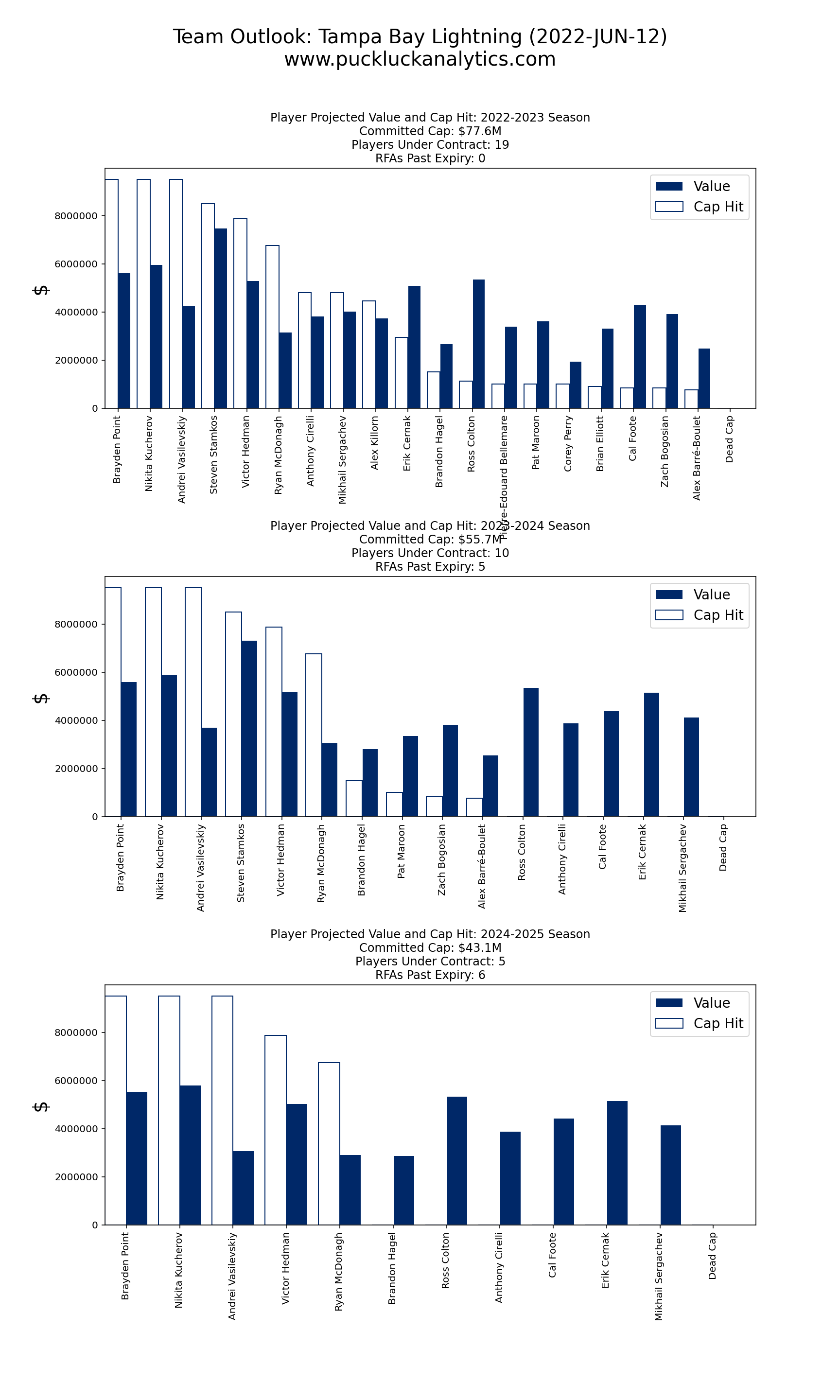
Ottawa Senators
The Ottawa Senators lead the pack of teams chasing the 2021-2022 playoff teams in the early projections for next season. Goaltending is a strength in the model and is a large part of the Senators higher rating than the other teams at the bottom of the projections. They’ll need all around improvement to the rest of the roster if they hope to break into the playoff picture.
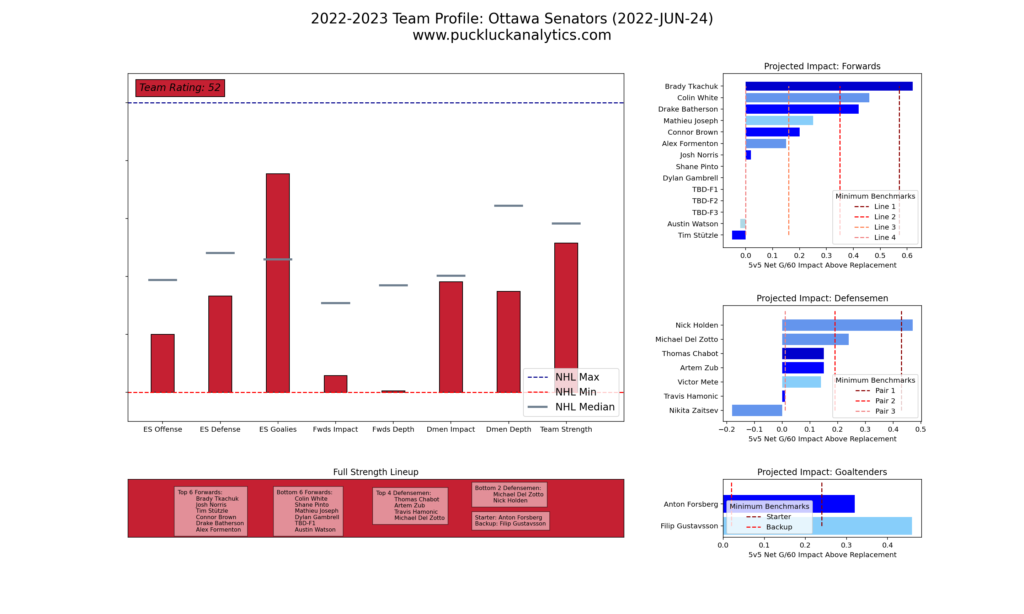
The good news for the Senators is that they have plenty of cap space available to upgrade their roster this summer. With 14 players under contract, they have an average of $3.9M to fill the remaining 9 roster positions. That’s enough to bring in a couple of big fish in free agency and still have good flexibility as they fill out the roster.
If the Senators can attract a few high calibre free agents and spend near the cap, they have an opportunity to be competitive with the top four teams in the division next season.
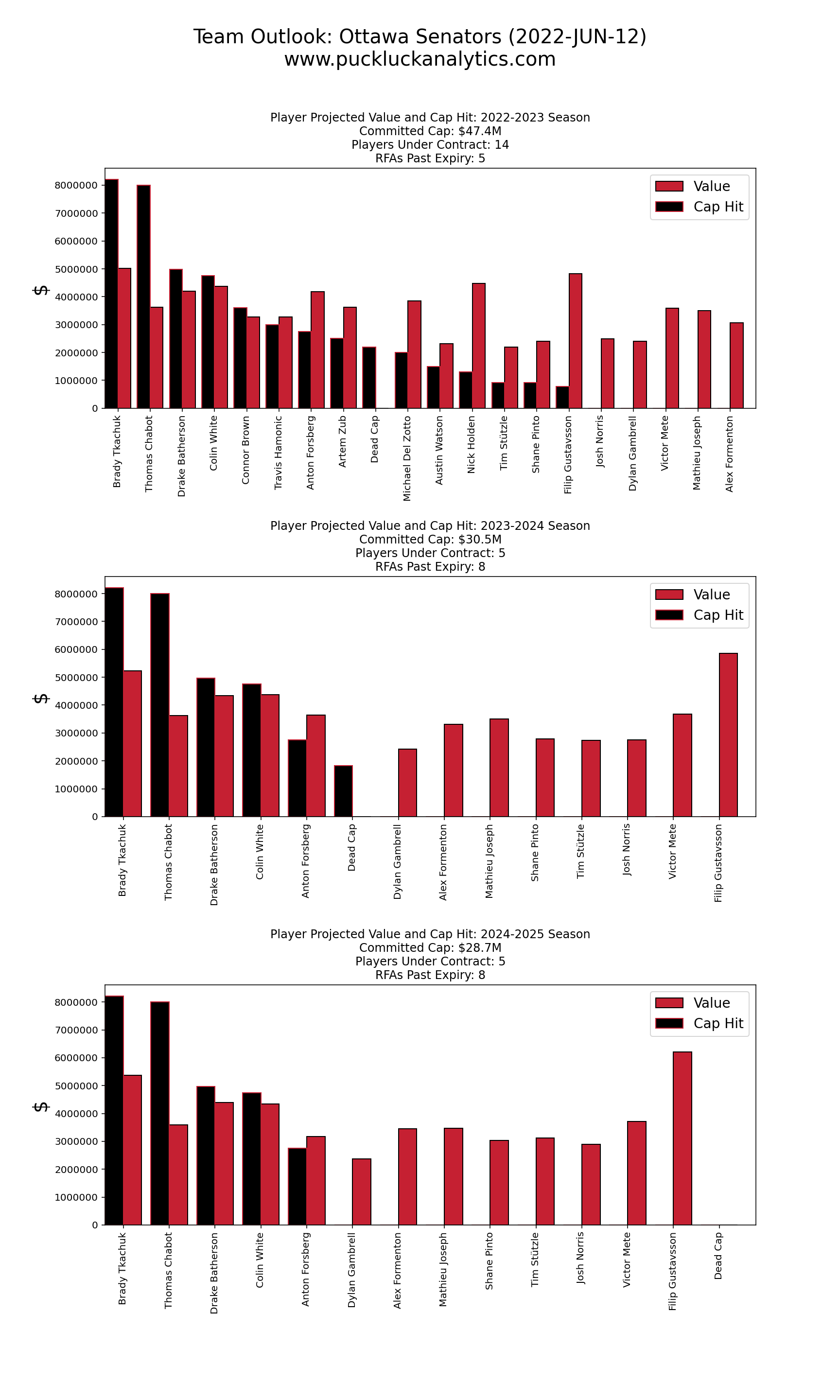
Detroit Red Wings
The Detroit Red Wings rebuild seems to be coming along nicely with the emergence of young stars like Lucas Raymond and Moritz Seider. The model hasn’t fully embraced them yet with just one season of NHL data to go by for last year’s rookie duo and internal growth should be expected. They need improvement throughout the roster on top of that internal growth to become a contender in the Atlantic Division, though.

With just $46M in cap space committed for next season, the Red Wings sit in a similar position to the Senators. The Red Wings have an average of $4.5M to spend on each of their remaining roster positions (including RFAs) and could make some large strides in improving their roster if they decide to spend to the cap. The big question is whether the Wings’ brass decides it’s time to start pulling out of the rebuild with a very strong draft class expected in 2023.
The Wings have the cap space to start making their move to legitimacy in the Atlantic next season if they choose to do so. If they fancy a chance at drafting Connor Bedard next summer instead, the roster could be patched up ahead of one more long season as bottom feeders.

Montreal Canadiens
When the Montreal Canadiens made a management change midseason in 21/22, they indicated a rebuild could be forthcoming. The roster is dismal relative to the rest of the league and will take an overhaul to get back to contender status.
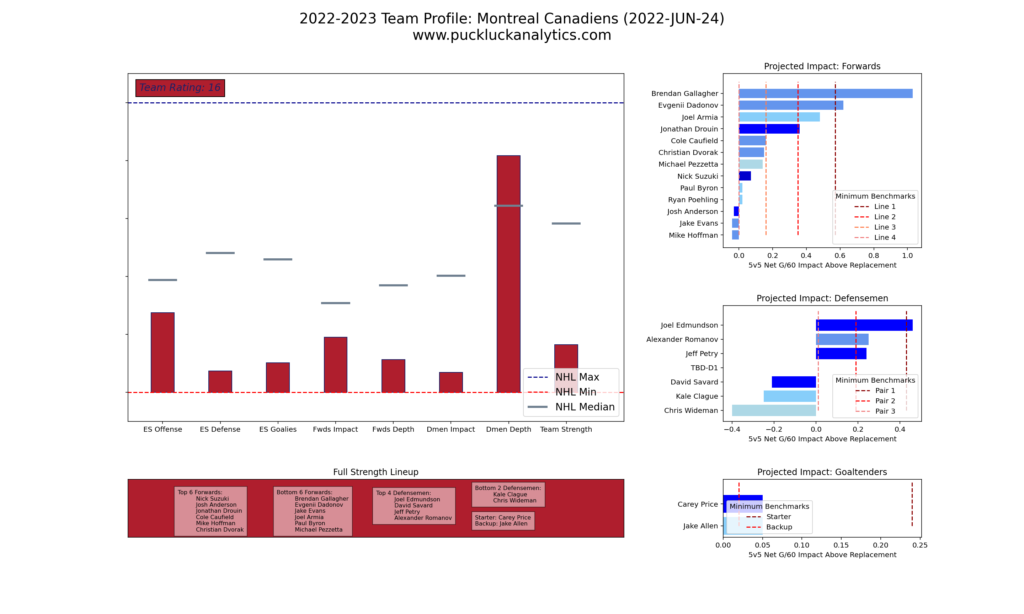
At the start of a rebuild, the Canadiens have a lot more cap space tied up next year than the previous two teams we looked at. They’ll have a difficult time improving the roster significantly without moving out inefficient contracts and that’s where their focus should be this offseason.
If the Habs do focus on moving out salary this summer and view the 2023 draft as an opportunity to add a potentially franchise altering player, it’s hard to see the Canadiens roster looking stronger than it does now on opening night.
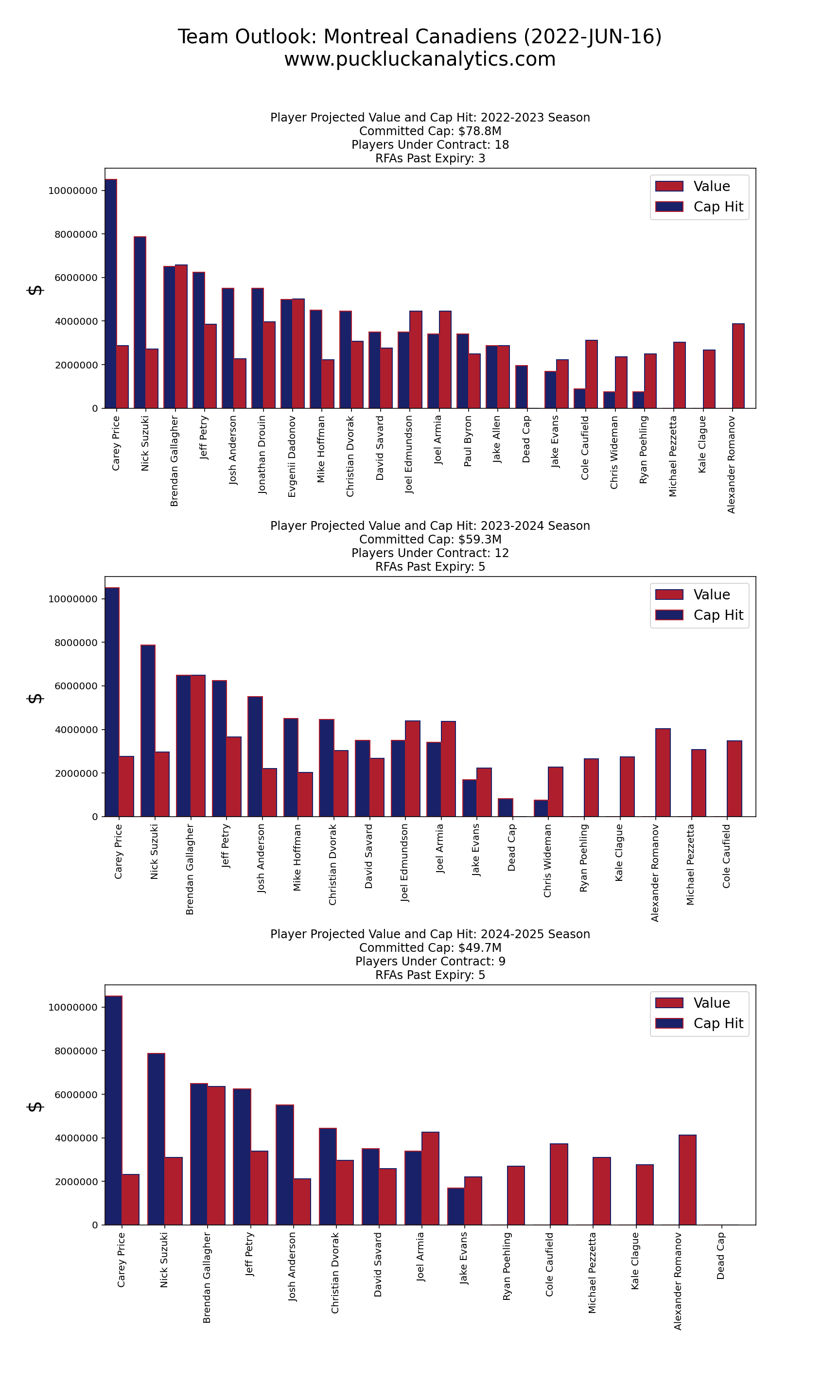
Buffalo Sabres
The Buffalo Sabres have been in the NHL cellar for a decade. They made some strides in over the past year but rank as the worst team in the model as the offseason gets underway. It will take massive improvement throughout the roster to get them back into the playoff picture.
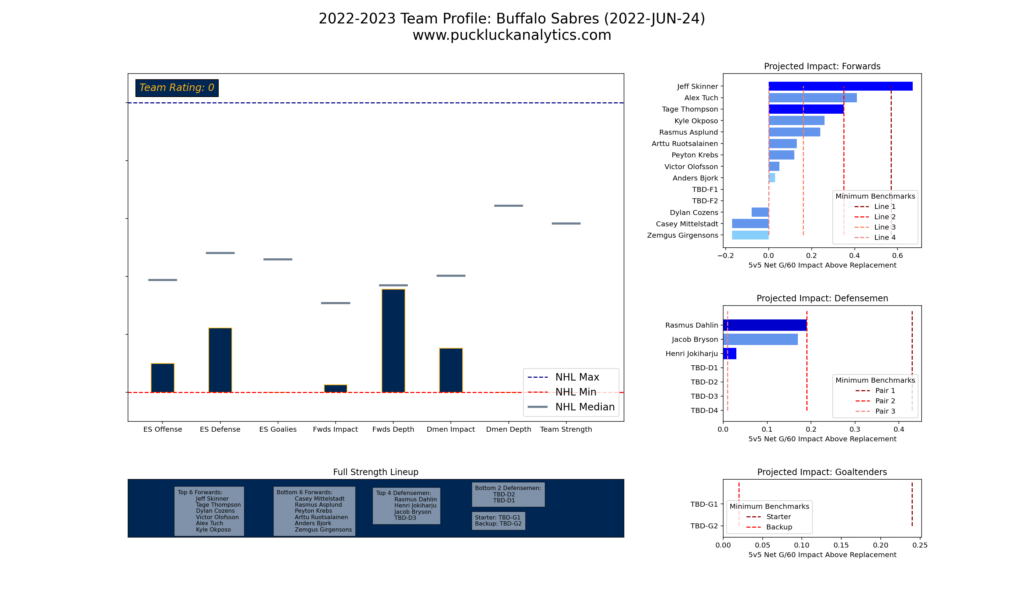
There is a glimmer of hope for the Sabres as they have the most available cap space in the division and only 12 players under contract for next season. They have an average of $3.3M in cap space to fill 13 roster positions, leaving oodles of flexibility in how they go about their summer.
A good offseason could see the Sabres move up the standings projections, particularly considering the current position the Canadiens are in.
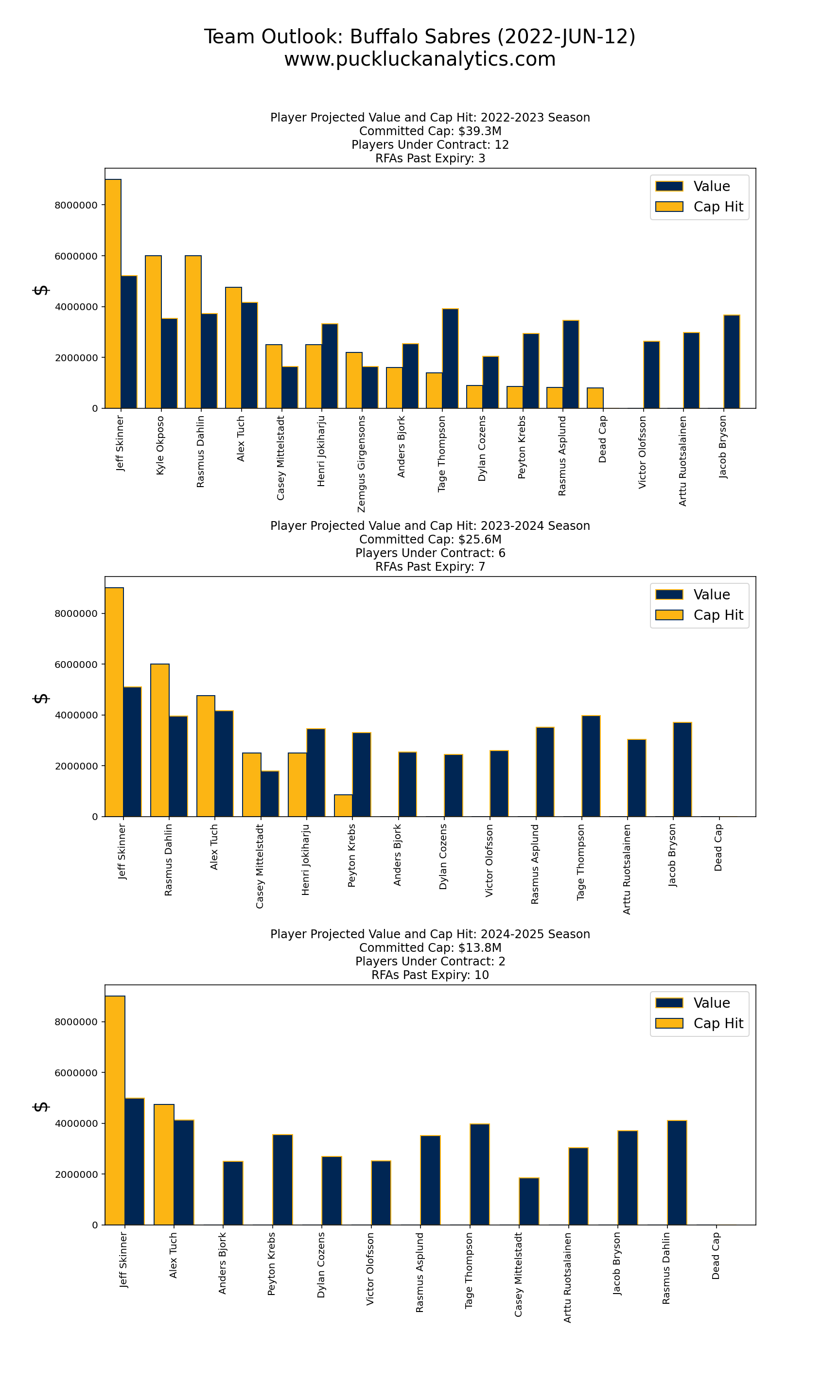
Want to peruse the player projections behind the team profiles or browse UFA player cards for the addition your favorite team needs? Sign up for an annual membership to get access to all 22/23 team and player projection cards. Plots will be updated through the offseason as the 22/23 rosters take shape and updated to track progress through the season so you can follow along with the changing landscape.
Input data for models from Natural Stat Trick. Contract data from CapFriendly.
